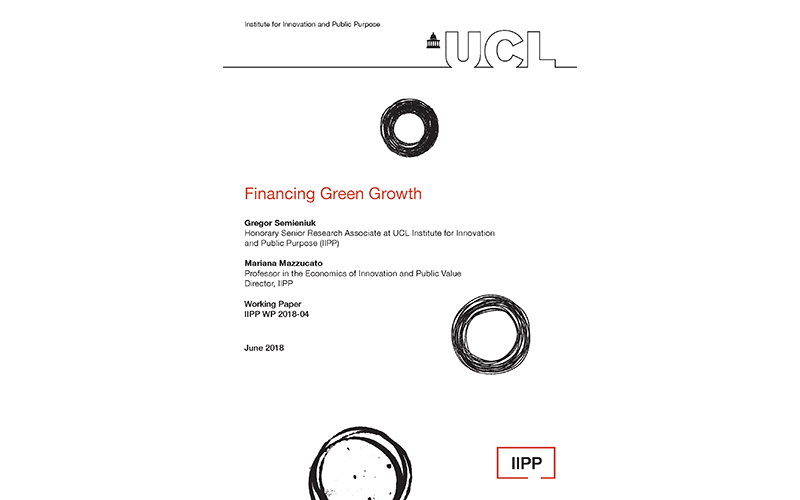Financing green growth

26 June 2018
UCL Institute for Innovation and Public Purpose (IIPP) Working Paper Series: IIPP WP 2018-04
This working paper was also published as a journal article in Technological Forecasting and Social Change.
Authors
- Gregor Semieniuk | Honorary Senior Research Associate, UCL Institute for Innovation and Public Purpose
- Mariana Mazzucato | Director, Professor in the Economics of Innovation and Public Value, UCL Institute for Innovation and Public Purpose
Reference
Semieniuk, G. and Mazzucato, M. (2018). 'Financing green growth'. UCL Institute for Innovation and Public Purpose WP (IIPP WP 2018-04). https://www.ucl.ac.uk/bartlett/public-purpose/wp2018-04
Abstract
This paper surveys the current state of financing green growth in the energy sector, based on the insight that there are different qualities of finance. In past transformational changes in other sectors, public monies played a key role across the innovation landscape. Public financing was central also in a number of past national energy transitions, as reviewed here for Iceland (from fossil to geothermal energy), Norway (from mainly non-electricity energy to hydroelectricity), France (from oil to nuclear) and the United States (from conventional to shale gas). In the current transition to low-carbon energy supplies, there is much public activity, most directed and concerted in China, but also reasons to doubt it is enough and applied in the right places to be able to finance the transition to a low carbon sector on time scales consistent with current climate change mitigation targets. A discussion of opportunities and challenges to a more central role for public financing concludes, drawing also on insights from the recent mission-oriented innovation literature.
 Close
Close

